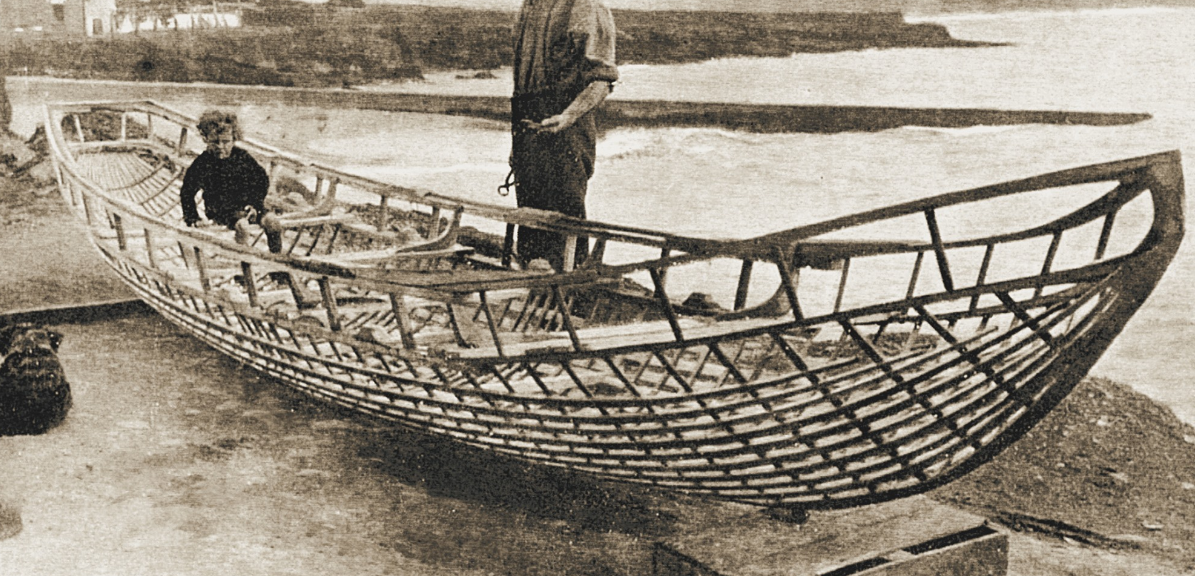If you build it they will come…the birth of Ronan
“[W]hen I said that nothing had been done I erred in one important matter. We had definitely committed ourselves and were halfway out of our ruts. We had put down our passage money — booked a sailing to Bombay. This may sound too simple, but is great in consequence. Until one is committed, there is hesitancy, the chance to draw back, always ineffectiveness. Concerning all acts of initiative (and creation), there is one elementary truth the ignorance of which kills countless ideas and splendid plans: that the moment one definitely commits oneself, then providence moves too. A whole stream of events issues from the decision, raising in one’s favor all manner of unforeseen incidents, meetings and material assistance, which no man could have dreamt would have come his way. I learned a deep respect for one of Goethe’s couplets: “Whatever you can do or dream you can, begin it. Boldness has genius, power and magic in it!”
I wanted to have a go at canoeing round Ireland but my little canoe would not be up to the job.
I had an idea, ‘canoe round Ireland’ but the list of important things I did not know was daunting, What would I paddle? When would I go? How would I find the money/time?
My 650km canoe trip across Ireland, the Irish Sea and Cumbria to Lazonby had demonstrated the truth that Murray so beautifully articulates after returning from his Everest expedition in 1951. Instead of a boat to Bombay I had bought a one way ferry ticket for a canoe and two people from Holyhead to Dublin, without yet having a boat and a way of getting to our start 250km away in the Shannon estuary not to mention many other things I didn’t know I needed to know. Our 17 foot canoe with all it’s kit weighed around 70 kilos…we weren’t going to be carrying it very far on our own but true to Murray’s promise help came.
On this occasion I committed by designing and building a canoe, anticipating with nervous excitement the resolution of such questions as who would I journey with, when would I go and how would I find the time…
“You’re gonna need a bigger boat”
What did you do during the Covid 19 lockdown? Well one thing I spent time on was researching canoe designs. After a long search I concluded that the perfect boat did not currently exist, I would have to build my own. I’m a canoeist and academic with limited experience of canoe design and construction but I found a ‘John’.
The beautiful lines of a traditional Irish curragh under construction
Everyone needs a ‘John’ (or Jane), someone with the skills to help you but also the willingness to listen, think critically and question. John Wilkinson is a master canoe builder who runs a company called ‘Valkyriecraft’. Based in Northern Ireland John builds beautiful, light canoes using a skin-on-frame design akin to the hardy curragh (or currach), ancestors of which still ply Ireland’s coasts and inlets. Sometimes known as pointy baskets these boats employ a flexible wood framework of thin, steam bent ribs woven together using twine and sheathed in canvas. With its spindly framework and the waterline clearly visible through the thin canvas, on first use you may imagine these craft to be fragile. However this design dominated in the UK for many thousands of years and in 1977 Tim Severin used one to demonstrate that St Brendan the Navigator could well have crossed to the Americas 500 years before the Vikings and a 1000 years before Columbus.
The bones of an idea - Ronan under construction
Ronan’s name means little seal. I first came across the gaelic meaning of Ronan in Frank Delayneys beautiful book ‘Ireland’ in which we follow the adventures of Delayney’s young protagonist of the same name; as he explores and learns about his native Ireland. I too hope to explore Irelands rich people and culture.
So, what shape should Ronan be? I needed a boat fit for a circumnavigation of Ireland, ideally this would be fast, dry and stable in rough seas. While researching boat design, I learnt that the sleek lines of the sea kayak originally mimicked the streamlined shape of seals. At 18’ 6” Ronan is large for a canoe and may not quite have the length and silven elegance of a seal but the name stuck. At his widest point Ronan is 36” which is modest for a standard canoe but narrow for a sailing canoe. Canoes are typically symmetrical in plan view - imagine attaching both ends of two 18 foot planks together then wedging a 36” stick to prize the central part open and you have the symmetrical plan view of a canoe. Sailing canoes are typically wider in the middle to create more leverage when balancing the effort of the sail.
A plan view of Ronan showing how width is carried toward the stern (at right)/
I hoped for a 38” to 40” boat but the widest John could build was 36” so he agreed to build an assymetrical, pear shaped plan view. Seals are0 ‘fish-form’ that is, widest ahead of the centre line making them fast under water. To be quick on the surface, displacement hulls are typically ‘swede-form’ where the maximum width is carried behind the centre line combining speed with stability.
With Ronan built and housed in my garage at home, I was committed. I had a canoe and an aim but noone to paddle, no support, no resources and no time but I looked forward to the unforeseen incidents and meetings that will arise from stepping into the unknown.



